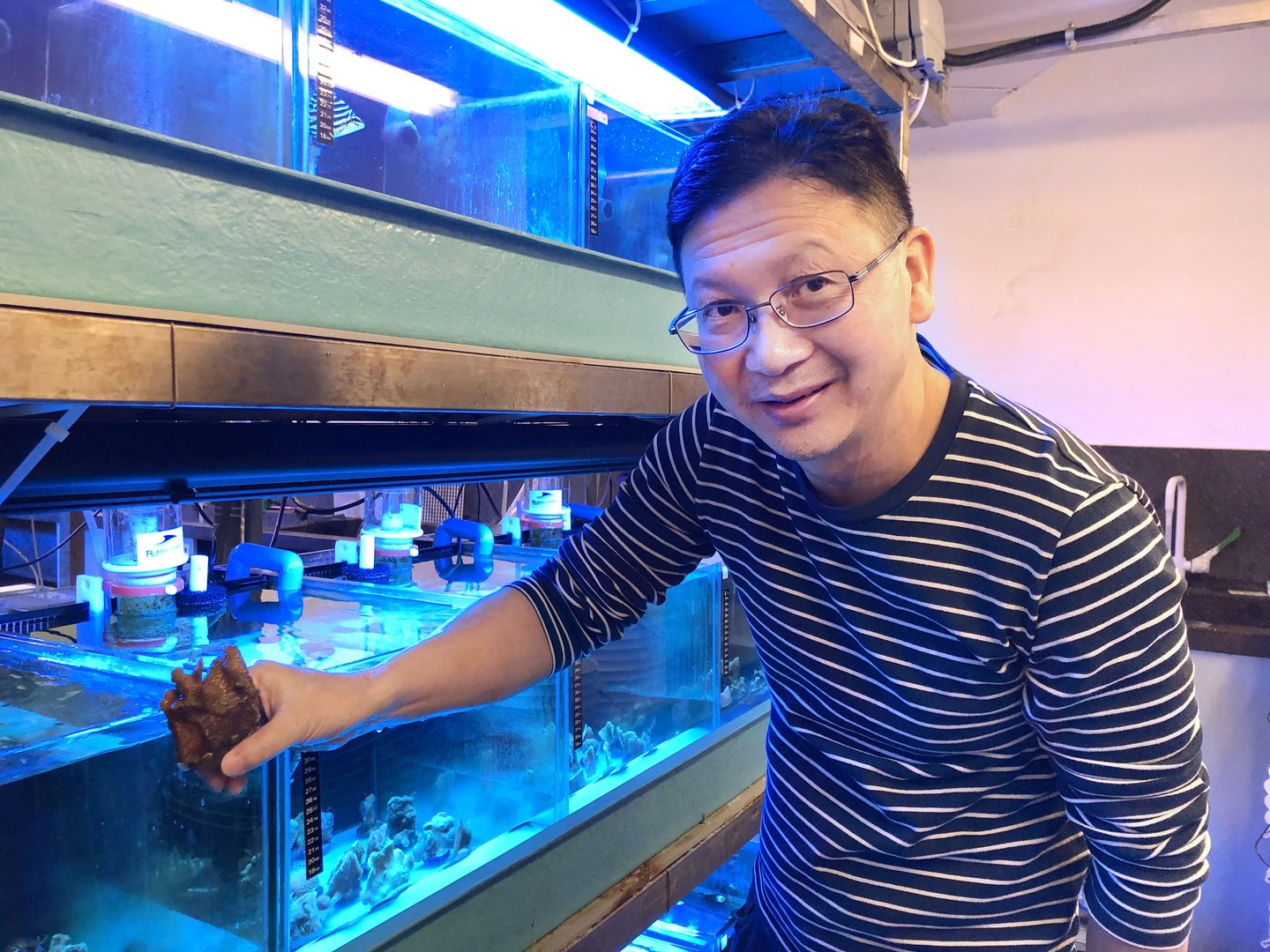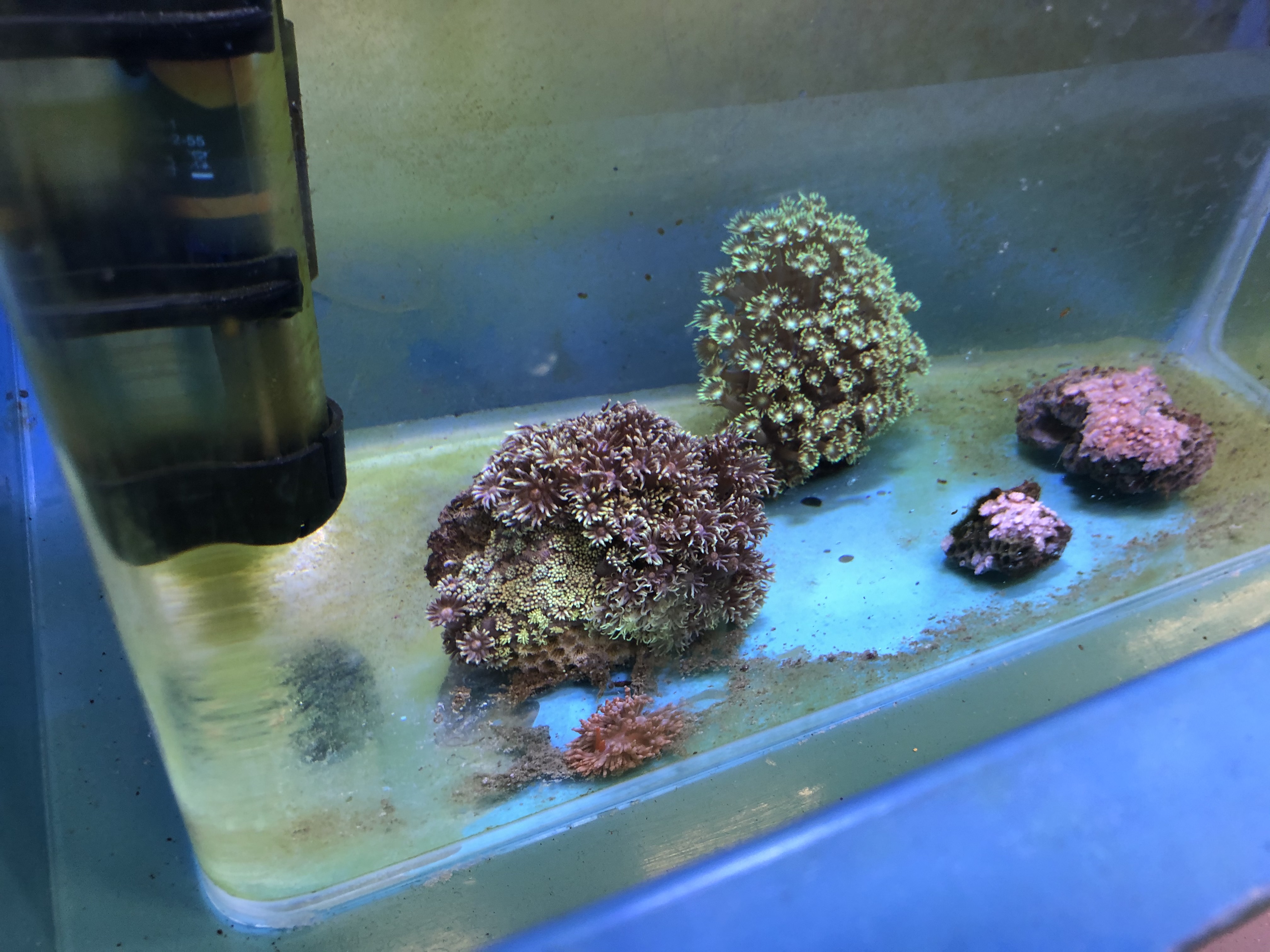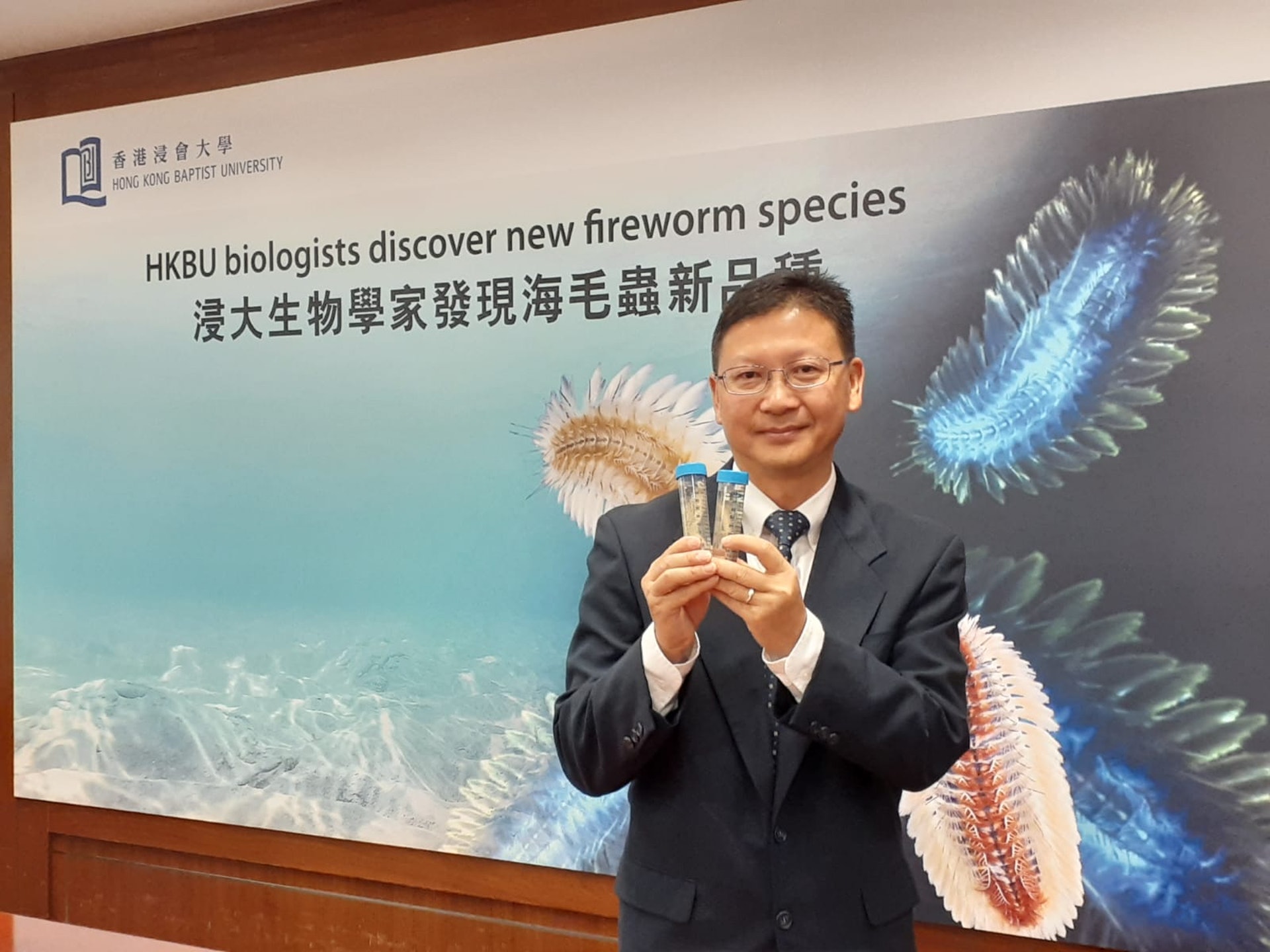Professor Jianwen Qiu
Associate Head, Department of Biology, HKBU
Nothing is more scary than encountering creatures with venomous bristles for the first time, but such encounters are apparently fascinating to taxonomists who conduct rigorous research to name and classify these organisms. Professor Jianwen Qiu, Associate Head of the Department of Biology at HKBU, has already discovered 17 new species over the last decade. He is concerned about the society and passionate about solving biology related problems. In 2018, when he noticed that fireworms had been spotted at numerous beaches in Hong Kong, he led a research team to identify the species and successfully named a new fireworm. When he learnt that the damage of local coral by bleaching and predation, he was determined to study the harm of predators to corals, and by sheer chance discovered three species of sea rabbit (nudibranchs). He is a down-to-earth biologist who combines biological expertise with social responsibility to resolve practical issues.

Professor Qiu selected nine coral species and tested their survival ability to resist various stresses in the laboratory.

Professor Qiu pointed out that fireworms may not be beautiful to people, but they may serve as bioindicators of ecological restoration.
In June 2018, fireworms were found in numerous locations across Hong Kong including Tsuen Wan and Tuen Mun, triggering public panic given that their bristles are toxic. Despite the wide news coverage of the outbreak, no one knew the species identity of the fireworms. Professor Qiu and his research team set out to collect specimens from local beaches and shallow-water. Fireworms are common in tropical and subtropical shallow-water ecosystems. They belong to the family Amphinomidae, a group of marine polychaetes. Each body segment of a fireworm has a pair of fleshy outgrowths that bear many chaetae (bristles), which are brittle and hollow. Once broken, they release neurotoxins that can produce a painful burning sensation on the skin around the area of contact, giving the species its common name - fireworm.
Identification of the fireworms species is essential in studying the composition of their toxins, laying the groundwork for the development of a cure against its toxic effects. It was quick for the team to identify the fireworms to the genus Chloeia. However, it was never an easy task to identify the specimens since there were 27 species of Chloeia around the world. The team had to compare the specimens they collected with other species of the same genus. “Unfortunately,” Professor Qiu explained, “Most literature on the described species of Chloeia is very old. The majority of papers were published in the late 19th to early 20th century. Some of the descriptions are too sketchy for identification, which made the task even more difficult.”

To ensure the accuracy of the research, the team borrowed holotypes, i.e., the original specimens upon which the description of a new species are based, from museums overseas. Eventually, the team found that the specimens they collected belong to two fireworm species, of which one from Sharp Island, Sai Kung is a new species that had not previously been reported. Due to the signature two black spots, arranged one behind the other on each segment of its body, Professor Qiu gave the name “Chloeia bimaculata” to this particular species. This is the first fireworm species named in Hong Kong and only the fourth named species to be added to the fireworm genus Chloeia in the last century.
As for the fireworm specimens collected from the two beaches in Tsuen Wan and the shallow waters of Tolo Harbour during the 2018 outbreak, the team checked a large volume of past literature, compared the pictures and specimens of 27 fireworm one by one, and performed DNA sequence comparisons. Eventually the team confirmed the specimens as “Chloeia parva”, first named in 1868. Unlike Chloeia bimaculata, this species has a dark Y-shaped mark on each segment. After dissection, the team described the morphology of the species in detail, further enriching the characteristics of the species.
Professor Qiu explained that as there is no direct food value for fireworms, it may be less attractive to people conduct research when compared to economically important species. However, the destruction of their habitats may result in a drastic change in the whole ecosystem as they are part of the marine food chain. In addition, due to their rapid responses to habitat improvement, fireworms may serve as bioindicators of ecological recovery. Professor Qiu said, “fireworms may not be beautiful to people, so I hope our work will bring more attention to the values of these less visible animals.”

Professor Qiu’s research team accidentally found tiny nudibranchs were eating the corals.
In recent years, Professor Qiu and his team have been engaged in research on the impact of climate change on corals in the South China Sea. They selected nine coral species in Hong Kong and tested their survival ability and physiological changes (ability to resist adversity) under different temperatures and salinity pressures in the laboratory, hoping to predict the winners and losers of South China Sea corals under global changes, and to help the government improve the effectiveness of coral conservation. While cultivating corals, they accidentally discovered a new coral species (currently being described) and three new species of nudibranchs (commonly called “sea rabbits”), two of which their descriptions have been published in academic journals.

Fireworms invaded beachers in Hong Kong in 2018. There were some reports of swimmers being stung.


New Fireworm “Chloeia bimaculata

Some nudibranchs are colorful predators of corals, though tiny when compared with other coral predators such as parrot fish. Thus, their damage to corals is largely ignored. Professor Qiu recalled, “Until one day, our students shockingly noticed that the corals kept in the lab had lost substantial amount of tissues. Upon closer inspection, they found tiny nudibranchs were eating the corals and even laid eggs on their surface.” In order to effectively control their impact on corals, his team will continue to study these nudibranchs to determine how many species are present in Hong Kong, what species of corals they prefer to eat, how much they eat per day, and who their enemies are.
Hong Kong waters are small yet home to around 6000 marine plant and animal species, accounting for a quarter of the total number in China. The city’s rich biodiversity is due to its special geographic location as well as high habitat diversity. Of course, it is also important to have a group of marine biologists like Professor Qiu who work diligently to discover them.
